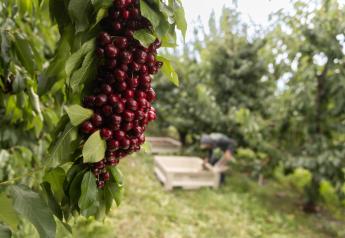Why lettuce greenhouse sector's growth is focused in the U.S.

Greenhouses for lettuce and leafy greens are being built at a rapid pace across the U.S. In contrast, in neighboring Mexico there is no similar greenhouse production and in Canada there is very little — the primary exception being 11-acre Whole Leaf Farms located in Coaldale, Alberta.
Based on my research, the primary driver for this U.S. phenomenon is investor comfort in making U.S.-based investments in leafy greens greenhouses, which are more expensive to build compared to tomato, cucumber and pepper greenhouses.
For example, AppHarvest’s latest tomato greenhouse is expected to be 63 acres and valued at $139 million — just over $50 per square foot. In contrast, Bright Farms’ 280,000-square-foot leafy greens greenhouse in North Carolina cost $21 million, or $75 per square foot. Gotham Greens built a 100,000-square-foot leafy greens greenhouse in Providence, Rhode Island, that cost $12.2 million, or $122 per square foot.
In addition to investor interest in the U.S. market, other potential factors affecting this phenomenon include:
- Temperature variance;
- Pricing certainty;
- Equilibrium capital leading the charge; and
- Generational knowledge in Canada.
Temperature variance
Lettuce and leafy greens perform best at cooler temperatures, up to 70 degrees Fahrenheit. Tomatoes, cucumbers and peppers, in comparison, grow best at temperatures in excess of 70 degrees Fahrenheit.
As the U.S. has a more moderate climate than either Canada or Mexico, a band of greenhouses across the U.S. takes advantage of the more temperate climate. Historically, leafy greens greenhouses have been built in the middle and upper sections of the U.S. However, boundaries have moved. Revol Greens, for example, has a 10-acre greenhouse in Minnesota and is expected to build a 20-acre greenhouse in Austin, Texas, to be completed in 2022.
Historically it has been more costly to keep a greenhouse cool rather than to heat it. However, alternative sources of energy and energy pricing incentives in parts of the southern U.S. have made it increasingly cost competitive to build greenhouses in this area.
Pricing certainty
The cost to build a leafy greens greenhouse is more than a tomato, pepper or cucumber greenhouse on a per square foot basis and on a per pound basis. As a reference, the cost of AppHarvest’s tomato greenhouse is approximately $3 per one year’s production of pounds of tomatoes. In comparison, Bright Farms’ recent leafy greens greenhouse is over $10 per one year’s production of pounds of lettuce and leafy greens.
This large cost structure variance requires greenhouse-grown lettuce to be priced at a premium. In contrast, greenhouse-grown tomatoes can and are priced directly with field-grown tomatoes. In the U.S. today, greenhouse-grown tomatoes make up the majority of fresh tomato sales.
The risk for an investor in a premium product is demand fluctuation. Economic and other market conditions will have a greater effect on premium product demand compared to product with more commodity-like traits.
Equilibrium Capital leading the charge
Equilibrium Capital is a leading investor in the North American controlled environment agriculture sector. It closed its second fund (CEFF II) this past month, with a capacity of $1.022 billion. Its first fund, CEFF I, had a capacity of $336 million. Recent investments made by Equilibrium include:
- AppHarvest: $91 million non-dilutive investment to support the building of its second tomato greenhouse in Kentucky.
- FINKA: Expansion capital for the Mexican greenhouse company, which operates tomato, pepper and cucumber greenhouses, the product of which is primarily sold into the U.S. and Canada. This was Equilibrium’s first investment outside of the U.S.
- Little Leaf Farms: $90 million of debt and equity financing for the company, which is currently building a lettuce and leafy greens facility in Pennsylvania and is expected to follow with a facility in North Carolina.
- Revol Greens: $110 million of debt and equity capital to support its building of a large lettuce and leafy greens greenhouse in Texas.
FINKA is Equilibrium’s only investment outside of the U.S. to-date.
Generational knowledge in Canada
According to the Ontario Greenhouse Vegetable Growers’ website, the organization formed in 1967 has “220 members who grow greenhouse tomatoes, cucumbers and peppers on over 3,000 acres.”
Two of the largest growers in Canada, Mastronardi Produce and Mucci Farms, have invested primarily in building their current greenhouses. To the extent each has branched out, it has been primarily to berries and eggplants. Mastronardi and Mucci have little to no owned lettuce and leafy greens production across North America.
Of note, in 2019 AppHarvest entered into a Purchase and Marketing Agreement with Mastronardi, under which “Mastronardi will be the sole and exclusive marketer and distributor of all tomatoes, cucumbers, peppers, berries and leafy greens” at its Morehead, Ky., facility (currently producing only tomatoes).
Per the 10-year agreement, Mastronardi has a right of first refusal for any additional facilities established in Kentucky or West Virginia. The take-away is Mastronardi is willing to distribute and market greenhouse-grown leafy greens, venturing a reputational risk, but has not yet chosen the investment risk of operating its own greenhouses.
Speaking to the OGVG, most greenhouse operators in Ontario have chosen to put their resources into products they already know. When asked specifically about lettuce and leafy greens, OGVG said the cost to build this type of greenhouse is very expensive per unit of output.
Recap
Some of the most seasoned greenhouse operators in North America are growing a range of produce types in the Ontario, Canada, area largely focused on tomatoes, cucumbers and peppers.
Each of these products grows best at higher temperatures than lettuce and leafy greens. Canadian operators who have been in the business for generations are potentially willing to distribute and market leafy greens, yet they have not been willing to make significant investments in the area.
While leafy greens were once only grown in the Northern parts of the U.S., Revol Greens, backed by Equilibrium Capital, is building one of the largest greenhouses in Texas. Equilibrium Capital, the “smart money,” has only invested in U.S. CEA companies to-date. The exception is FINKA, which operates in Mexico but sells exclusively to the U.S. and Canada.
Based on my research, until lettuce and leafy greens greenhouse production can be priced competitively with field-grown product, it will continue to be a U.S. phenomenon. At least until that time, Canadian and Mexican operators will leave greenhouse lettuce and leafy greens production to U.S. operators.
Peter Tasgal is a Boston-area food agriculture consultant focused on controlled environment agriculture.







